2006 Egypt
22 December 2006, Friday; Desert Rose
Hotel, Siwa Oasis, LE80
We began our day with a sunrise from the
roof above our room. The light over the distant dunes and palms soft and
peaceful.
Then washed our clothes and ourselves and
discussed with Khalid his “offer” of a driver from Siwa to Bahariyya. We had
thought this would be a real mission (what with it not being a well-travelled
road and permits being required, etc), but last night when we first mentioned
our plans to Khalid, he responded with “no problem”.
In the event, we have arranged the journey
– easily and at the same price – through Ahmed at 4x4Siwa. And are now
considering an extended option / tour to take in the White Desert.
We encountered on our walk into town a
vehicle returning from the desert. Which, at our mute request, gave us a lift
into town and dropped us outside 4x4Siwa.
Since then we have strolled through the
market – not pristine, mainly fruit and veg, some batteries and knives and so
on, virtually no women around, lots of donkey carts and attendant children
chewing sugar cane, made a call to check out Khalid’s offer (same price as
4x4Siwa, less professional sounding), had a super breakfast of feta and tahina
and kofta and aubergine and pita. And taken Ali Baba to visit the Temple of the
Oracle (built in the 6th century BC, very influential, visited, for example, by
Alexander the Great). What we liked most there was the view over the oasis!
We looked at a couple of (unimpressive)
craft shops. And spent a sizeable chunk of the afternoon whiling away the time
in the attractive Abdu Restaurant. While there we decided to add the Black and
White Deserts (between Bahariyya and Farafra) to our itinerary and booked Ahmed
at 4x4Siwa at LE1800. This includes two nights in the desert, transport, a
driver and cook, and our meals. Not cheap, in fact twice our daily budget, but
it is a long, bad road. And they have to get back home.
Our favourite part of town was Old Shali,
the 13th century fortress enclave in which the inhabitants of Siwa used to live
before a three-day rain in 1926 literally disintegrated their homes and they
abandoned them. The 4-5 storey houses were built of kershef: large chunks of
salt mixed with rock and plastered in local clay. We climbed into the town
ruins – situated against and creeping up a hill that overlooks the Siwa town
and oasis. Most of the houses are now uninhabited and into one of these we
went. Climbing – with a little anxiety – up two flights of stairs past tiny
cool cave-like rooms. An amazing jumble. One or two houses are still occupied
and at least one – unexpectedly attractive – has been renovated. It must have
been quite a development. They say in the old days more foreign visitors went
into Shali than came out!
In Siwa town, some buildings – the Bank du
Caire, a restaurant, a coffee shop – have been built in this old style. Lovely.
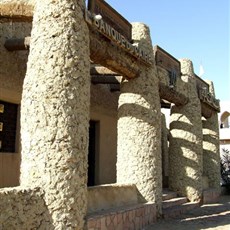
Siwa oasis
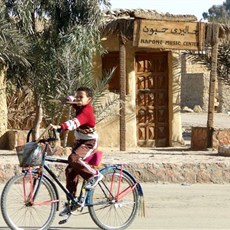
Siwa oasis
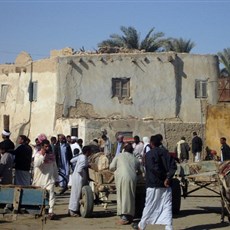
Siwa oasis
We then scrambled to the top of the hill – me not without trepidation and difficulty – for spectacular 360 degree views of the entire oasis. There is water all around with the palms and sand-coloured abodes within. On top of the hill we ate our sweet nartjies and chatted to Ismael. He had come up after us and sat near us reading. He is studying sociology – with philosophy (Kant, etc) as one of his subjects – at Cairo University. He finds Cairo too noisy and is glad to be home before his January exams. He said Egyptians are disdainful of his subject choice and that in the whole of Egypt he would not find work. He told us a couple of foreigners have built homes in Siwa. That Prince Charles came to visit soon after his marriage (to Camilla) and stayed in a hotel at $400 per night. That most Egyptians use the internet to play games not do research. And that property in the oasis is privately owned. His was the first vaguely negative response we have received to being South African. Nothing said, just a facial expression and a comment that showed his awareness of and disapproval of apartheid.
Siwa has little in common with the other Western Oases. The Siwan people are mostly Berbers, the true Western Desert indigenous people, who once roamed the North African coast between Tunisia and Morocco. They inhabited the area as early as 10,000 BC. Their language, traditions, rites, dress, decorations and tools differ from those of the other Western Oases. Siwa Oasis lies in a depression 12m below sea level; it is 80km long and 9-28km wide. Its main crops are dates and olives.
During the course of the day we spoke to the German man we met on the bus, and to an Australian woman and her son who have been in Egypt for a few months. She gave us dates stuffed with almonds – and delicious they were too.
We dined at East West Restaurant – where we had breakfasted. And were driven home by Mohammed’s brother, Ali, in his bakkie.
Charl has taken up smoking – for the duration of our trip, he says. Mmm…
And so to sleep.
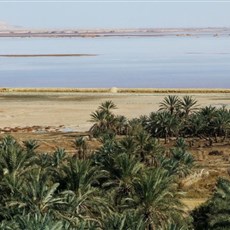
Siwa oasis
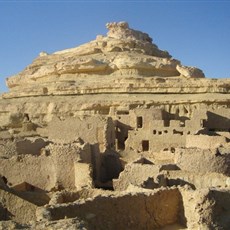
Siwa oasis

Siwa oasis
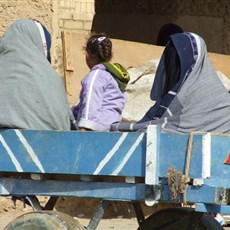
Siwa oasis